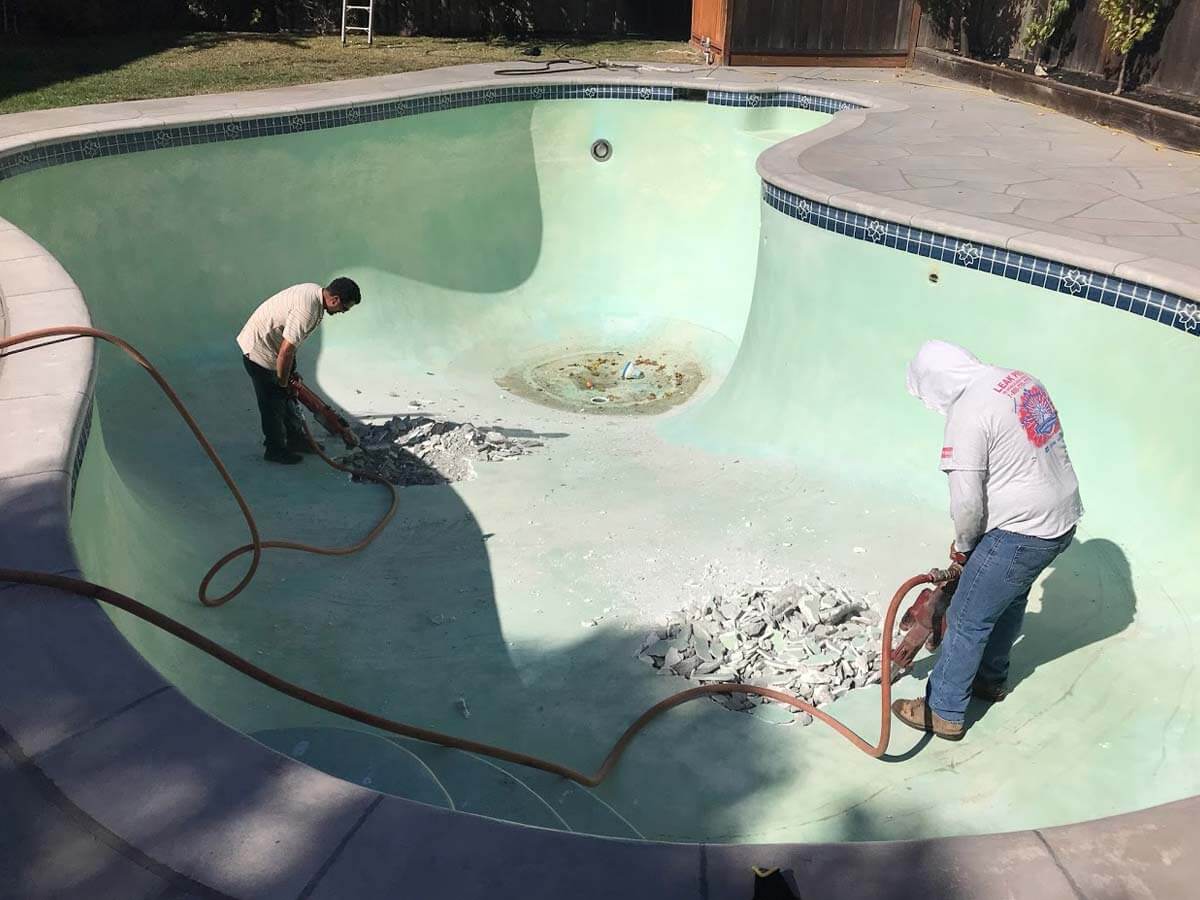
A residential demolition is the removal of a residential structure. It could be for a new build or a renovation, or just for safety. A residential demolition project should be handled with care and precision. It might require professional help.
The federal environmental regulations that govern large-scale residential demolition projects will vary depending upon the site. However, there is a common set of practices that can help lower the risks associated this type of activity. These best practices include proper planning, safety procedures, and using the appropriate equipment for the job. For more information, the EPA's Residential Demolition Hazards guide is a great resource.
A variety of tools and machinery will be required depending on the project's size. Professional contractors should be able to use the correct equipment and have the necessary knowledge to complete the job safely and efficiently. The contractor should also have insurance coverage.

The EPA's residential demolition safety guide is a useful tool that homeowners and local governments can use to make sure their demolition project goes according to plan. This guide outlines EPA’s current understanding of most hazards and provides technical details about how they should be removed and disposed. The guide doesn't confer any legal rights. However, it is designed to be useful to the general public and should be used in conjunction with other relevant resources.
There are many factors that could affect the time it takes to complete a residential demolition job. There are many factors that can affect the amount of time it takes for a residential demolition to be completed. These include the number and cost of permits, equipment requirements, and labour costs. For larger projects, both state and federal regulations may apply. It can be difficult for a project to comply with federal or local environmental regulations. This could lead to legal issues and possible fines.
The sub-grade should be slant toward the back in order to encourage water redistribution. In order to create a stable foundation without overcompaction, the grading procedure also includes laying in structured soil that is free from debris. This process may also involve re-vegetation with plant communities that have high functional diversity.
Common recommendation for demolition projects is to use a "Safe Work Method Declaration". A safe work methodology statement is a plan that describes the steps involved in a demolition and how hazards can be avoided or eliminated. This is usually written by a licensed contractor in demolition, who should communicate frequently with the property's owner.

The removal of asbestos is a key consideration in residential demolition projects. Proper training and the proper equipment are required to remove asbestos. There are dangers from asbestos fibers and fumes, which can become airborne during demolition. To answer any questions, you should consult an asbestos removal certified company.
Other materials that can be hazardous include mercury, lead, and PCBs. Each of these materials must be properly disposed of and handled in order to protect human health and the environment. There are specific laws that govern open burning and the disposal lead-based substances.
FAQ
How important does it matter to be pre-approved before you apply for a loan
Getting pre-approved for a mortgage is very important because it gives you an idea of how much money you need to borrow. This will help you decide if you are eligible for a loan program.
What time does it take to finish a home remodel?
It depends on the size of the project and the amount of time that you spend each day. The average homeowner spends three to six hours each week working on the project.
How do you renovate a house with no money?
When renovating a home without spending money, the following steps should be followed:
-
Make a budget plan
-
Find out the materials you require
-
Decide where you want them to go
-
You will need to make a list of the things that you must buy.
-
Figure out how much money you have available
-
Plan your renovation project
-
Start working on your plan
-
Do some research online
-
Ask family and friends for their help
-
Get creative
What are my considerations when purchasing a new house?
You need to ensure you have enough funds available to cover closing costs before you buy a home. Refinancing your mortgage might be an option if you don’t have enough cash.
What order should renovations of the home be performed?
It is important to determine where you want to place everything when renovating your house. If you're planning on selling your home soon, it is important to consider how you wish to present your home for potential buyers. Next, think about how you want your living space, including the kitchen, bathroom and living room. After you've decided on the rooms that you wish to renovate, it is time to start searching for contractors who are experts in these areas. Finally, once you have hired a contractor, you should begin working on your renovation project.
Statistics
- A final payment of, say, 5% to 10% will be due when the space is livable and usable (your contract probably will say "substantial completion"). (kiplinger.com)
- The average fixed rate for a home-equity loan was recently 5.27%, and the average variable rate for a HELOC was 5.49%, according to Bankrate.com. (kiplinger.com)
- Rather, allot 10% to 15% for a contingency fund to pay for unexpected construction issues. (kiplinger.com)
- Most lenders will lend you up to 75% or 80% of the appraised value of your home, but some will go higher. (kiplinger.com)
- Design-builders may ask for a down payment of up to 25% or 33% of the job cost, says the NARI. (kiplinger.com)
External Links
How To
How do I plan a whole-house remodel?
Planning a whole-house remodel requires planning and research. Before you begin your project, there are many things to think about. It is important to determine what type of home improvements you are looking to make. You can choose from a variety of categories, such as kitchen or bathroom, bedroom, living space, or living room. After you decide which category you want to work on, figure out how much you can afford to spend on the project. If you do not have any previous experience in working with homes, it is best that you budget at least $5,000 per bedroom. If you have experience, you may be able to manage with less.
Once you know how much money your budget allows you to spend, then you will need to decide how big a job it is you are willing to take on. A small kitchen remodel will not allow you to install new flooring, paint the walls, or replace countertops. You can do almost everything if you have enough cash for a full-scale kitchen renovation.
Next, look for a contractor with experience in the type or project you are looking to tackle. This way, you'll be guaranteed quality results and you'll save yourself a lot of headaches later on down the road. You should begin gathering materials and supplies after you've found a competent contractor. You might need to make everything from scratch depending upon the size of your project. There are many stores that offer pre-made products so it shouldn't be difficult to find what you need.
After you've gathered all the supplies you need, it's time to begin making plans. Begin by sketching out a rough plan of where furniture and appliances will be placed. Next, plan the layout. Make sure that you leave space for plumbing and electrical outlets. Also, try to put the most used areas near the front door so that visitors can easily access them. Final touches to your design include choosing the right colors and finishes. To save money and keep your budget low, you should stick to neutral tones.
Now that your plan is complete, it's time you start building! Before you start building, check your local codes. While some cities require permits, others allow homeowners to construct without them. You will need to first remove all walls and floors that are not required for construction. To protect your flooring, you will lay plywood sheets. Next, nail or screw pieces of wood together to form the frame that will house your cabinets. Finally, attach doors to the frame.
There are some final touches that you will need to make after you are done. You might want to cover exposed pipes or wires. To do this, you'll use plastic sheeting and tape. It's also a good idea to hang mirrors and photos. You should always keep your work area clean.
You'll have a functional home that looks amazing and is cost-effective if you follow these steps. Now that you are familiar with how to plan a whole home remodel project, it is time to get started.